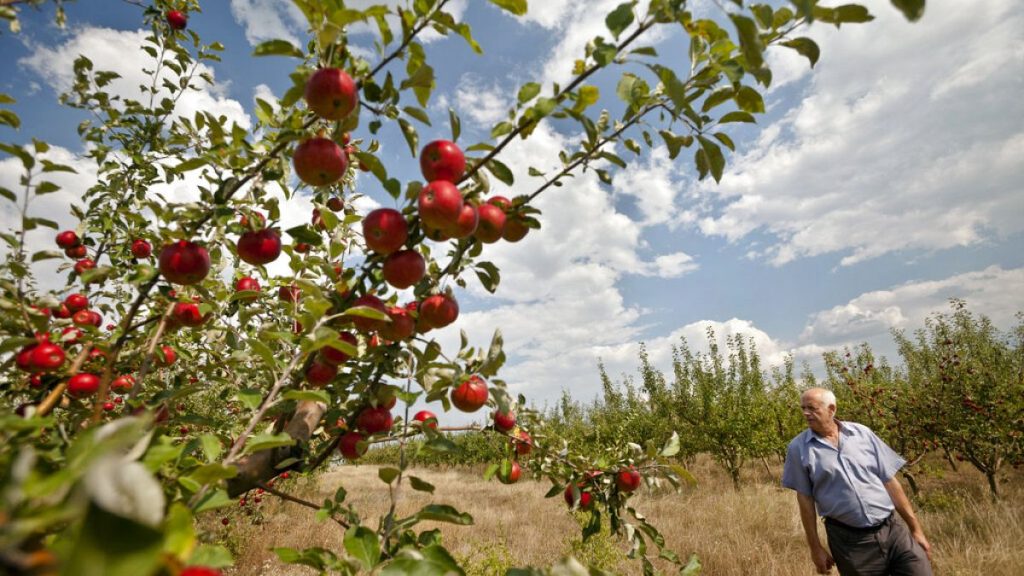As Europe experiences an unexpected cold snap during the spring season, fruit farmers across the continent are facing concerns about the impact on their summer harvests. From the Balkan states to Poland, temperatures have plummeted dramatically, bringing snow and ice to the region and damaging crops. For example, a fruit farmer in Croatia lamented the sudden drop in temperatures after a period of warm weather, expressing doubts about the survival of his apples. In Poland, strawberry farms have been particularly hard hit by frosts reaching as low as -8C, threatening the upcoming harvest.
Amidst the challenging conditions, farmers in the Netherlands have adopted innovative techniques to protect their fruit trees. By spraying the buds with water, a frozen crust forms that actually provides insulation and releases latent heat when the ice melts. This process helps keep the buds slightly warmer, potentially saving them from being damaged by the cold temperatures. Farmers like Joost van Diepen have observed the benefits of this method, noting how the layer of ice on the branches and fruit can help maintain temperatures just above freezing, offering a crucial lifeline for the crops.
The severe weather conditions have also affected transportation and daily life, with heavy snowfall in higher altitudes posing challenges for drivers who have had to switch back to winter tires. Despite the efforts to adapt to the cold snap, forecasters are predicting that the extreme conditions will persist into the following week. The unexpected and extended cold spell has created uncertainty and anxiety for fruit farmers who rely on favorable weather conditions for a successful harvest. The looming threat of continued frost and snow raises concerns about the long-term impact on crop yields and the potential economic consequences for the agriculture sector in Europe.
The unseasonably cold spring weather has disrupted the traditional rhythms of fruit farming, forcing farmers to confront the challenges of adapting to and mitigating the effects of the extreme conditions. The contrast between record-high temperatures and sudden plunges below freezing highlights the unpredictability and volatility of weather patterns, underscoring the vulnerability of agriculture to climate variability. Farmers like Franjo Crnković in Croatia are grappling with the loss of their crops due to the abrupt shift in weather, emphasizing the inherent risks and uncertainties inherent in agricultural practices.
As the cold snap persists, fruit farmers are facing the difficult task of navigating the immediate impacts on their current harvests while also considering the potential long-term consequences for their businesses. The role of innovation and adaptation in responding to the challenges posed by the extreme weather conditions is crucial for farmers seeking to protect their livelihoods and ensure the sustainability of their operations. By exploring new technologies and techniques, such as the use of water spray to protect fruit buds from frost, farmers are demonstrating resilience and ingenuity in the face of adversity, illustrating the importance of flexibility and creativity in agricultural practices. Despite the uncertainties and setbacks caused by the cold snap, farmers are working diligently to safeguard their crops and livelihoods, illustrating their commitment to overcoming the challenges presented by the changing climate.


